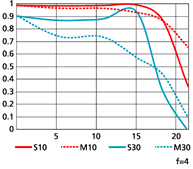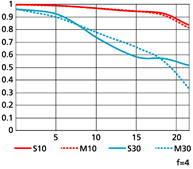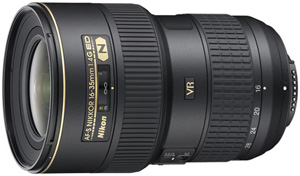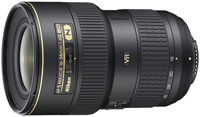
|

$220 SAVE $130 = 37.0% Western Digital 16.0TB Western Digital Ultrastar DC HC550 3.5-in… in Storage: Hard Drives
|

|

|

|

|
Nikon AF-S Nikkor 16-35mm f/4G ED VR
Related: field curvature, gear, image stabilization, Nikon, Nikon AF-S 16-35mm f/4 VR, Nikon lenses
The Nikon AF-S Nikkor 16-35mm f/4G ED VR zoom is Nikon’s answer (after many years) to Canon’s EF 17-40mm f/4L zoom. But I suspect that the Nikon offering will yield superior performance, though that remains to be seen, especially at the 16mm end.
As with the newly-announced 24mm f/1.4G ED, the new 16-35mm f/4G goes to great pains to achieve high image quality, though sharpness at 16mm looks a bit dubious off-center.
Vibration reduction in an ultra-wide lens!
As a “first”, the 16-34/4G include VR (vibration reduction) functionality, something not yet seen in such a wide-angle zoom for a DSLR. I would personally rather have omitted the weight and extra complexity of the VR lens group, but I’ll reserve judgment until I can put it through its paces.
A “G” lens with no aperture ring
My biggest disappointment with the new Nikon 16-35/4G is that it is a “G” lens, which means that it cannot be used on Canon with a mechanical lens adapter, thus reducing its versatility for those of us that shoot both Nikon and Canon. But most users won’t be concerned with this.
Specifications
Per Nikon.
| Focal length |
16-35 mm |
|---|---|
| Maximum aperture |
f/4 |
| Minimum aperture |
f/22 |
| Lens construction |
17 elements in 12 groups Two ED glass + three aspherical lens elements + Nano Crystal Coat |
| Angle of view |
107° - 63° (83° - 44° with Nikon DX format) |
| Closest focusing distance |
0.29 m (1.0 ft.) at a focal length of 16mm or 35mm, 0.28 m (0.9 ft.) at a focal length between 20mm and 28mm |
| Maximum reproduction ratio |
0.25x = 1:4 |
| No. of diaphragm blades |
9 (rounded) |
| Filter/attachment size |
77mm |
| Diameter x length (from lens-mount flange) |
Approximately 82.5 x 125 mm |
| Weight |
Approximately 680g / 24.0 oz |
| Supplied accessories |
77mm Snap-on Front Lens Cap LC-77, Rear Lens Cap LF-1, Bayonet Hood HB-23, Flexible Lens Pouch CL-1120 |
MTF chart (modulation transfer function
The MTF chart suggests excellent overall contrast (10 lp/mm) wide open at f/4. That’s assuming a well-built sample; these graphs are your best case, and might be computed, not measured from real lenses.
At the 16mm end, MTF looks to be very strong most of the way to the edges of a full-frame camera, but with very soft corners. This is quite possibly due to field curvature; the lens might actually be very sharp, just not in a plane. The “bump” near the 15mm mark suggests field curvature also.
At the 35mm end, MTF looks to be very high, with minimal field curvature and astigmatism. Most likely optimal performance will come at f/5.6, assuming a well-built sample.


Conclusions
This is a very good lens, but with very strong distortion at 16mm, and modest sharpness at the 35mm end.
Where to buy and related gear
You can get the Nikon 16-35mm f/4G ED VR at B&H Photo, thank you for using links on this site when you buy.
See also my list of recommended Nikon gear and lenses, as well as the gear pages.
Learn more about Nikon lenses
For in-depth reviews of lenses that fit Nikon cameras, subscribe to Diglloyd’s Advanced Photography (DAP) and/or the Guide to Zeiss ZF / Zeiss ZE Lenses.
DAP is not just about lenses, it’s about cameras and technique and making better images, written to be approachable by beginner’s, but valuable to professionals. New material is constantly being added, so subscribe now!
Seagate 22TB IronWolf Pro 7200 rpm SATA III 3.5" Internal NAS HDD (CMR)
SAVE $100


















